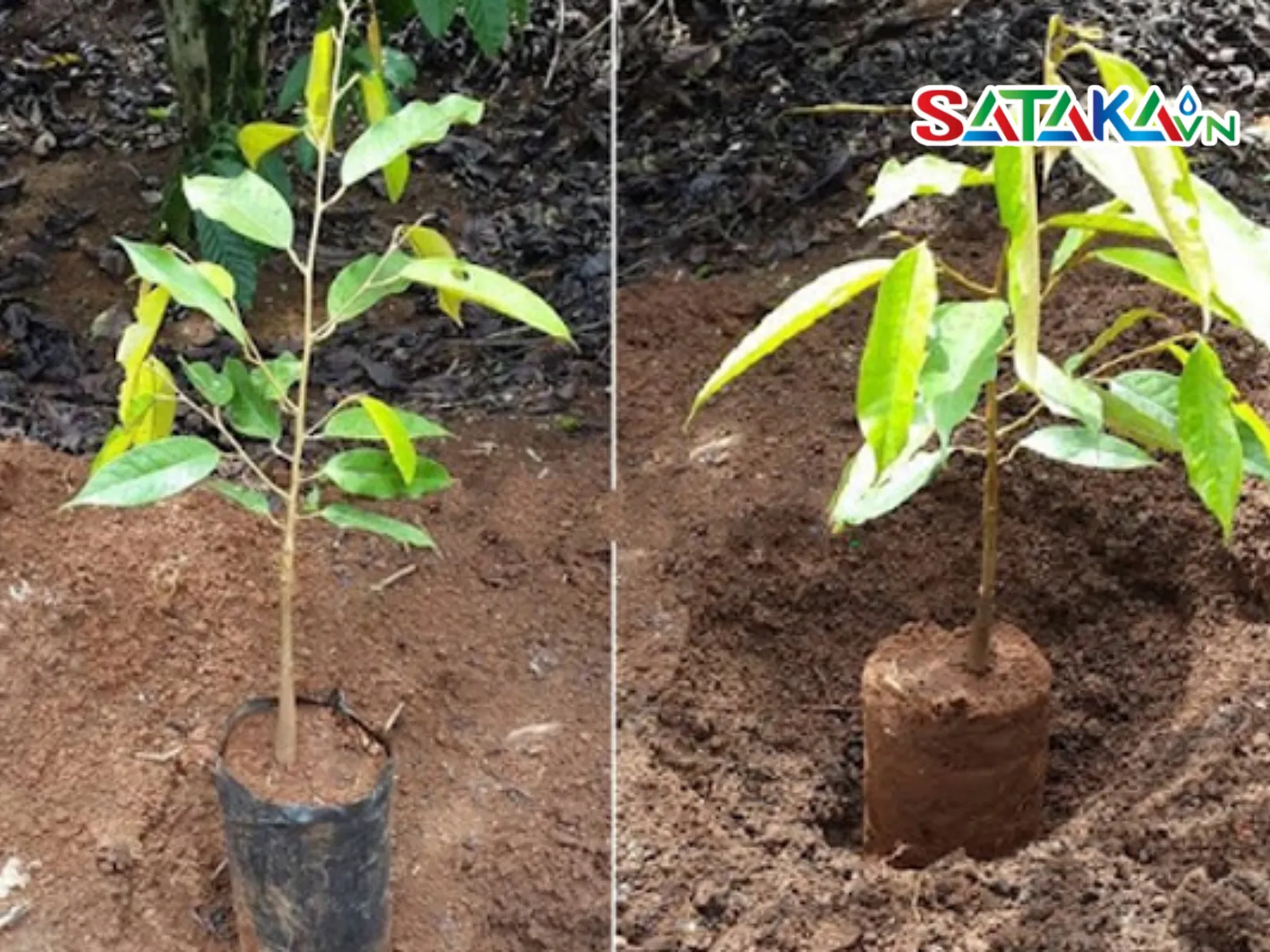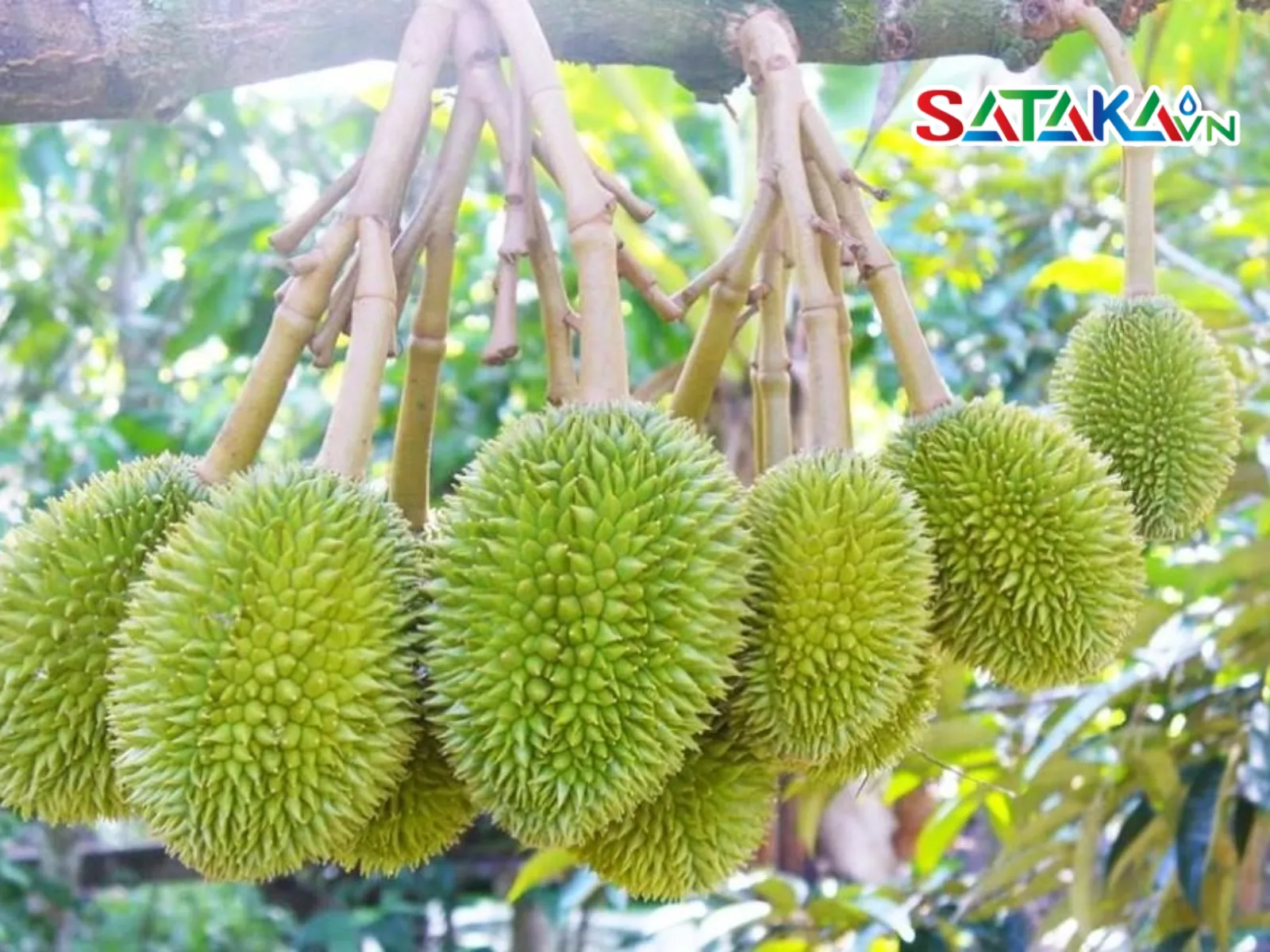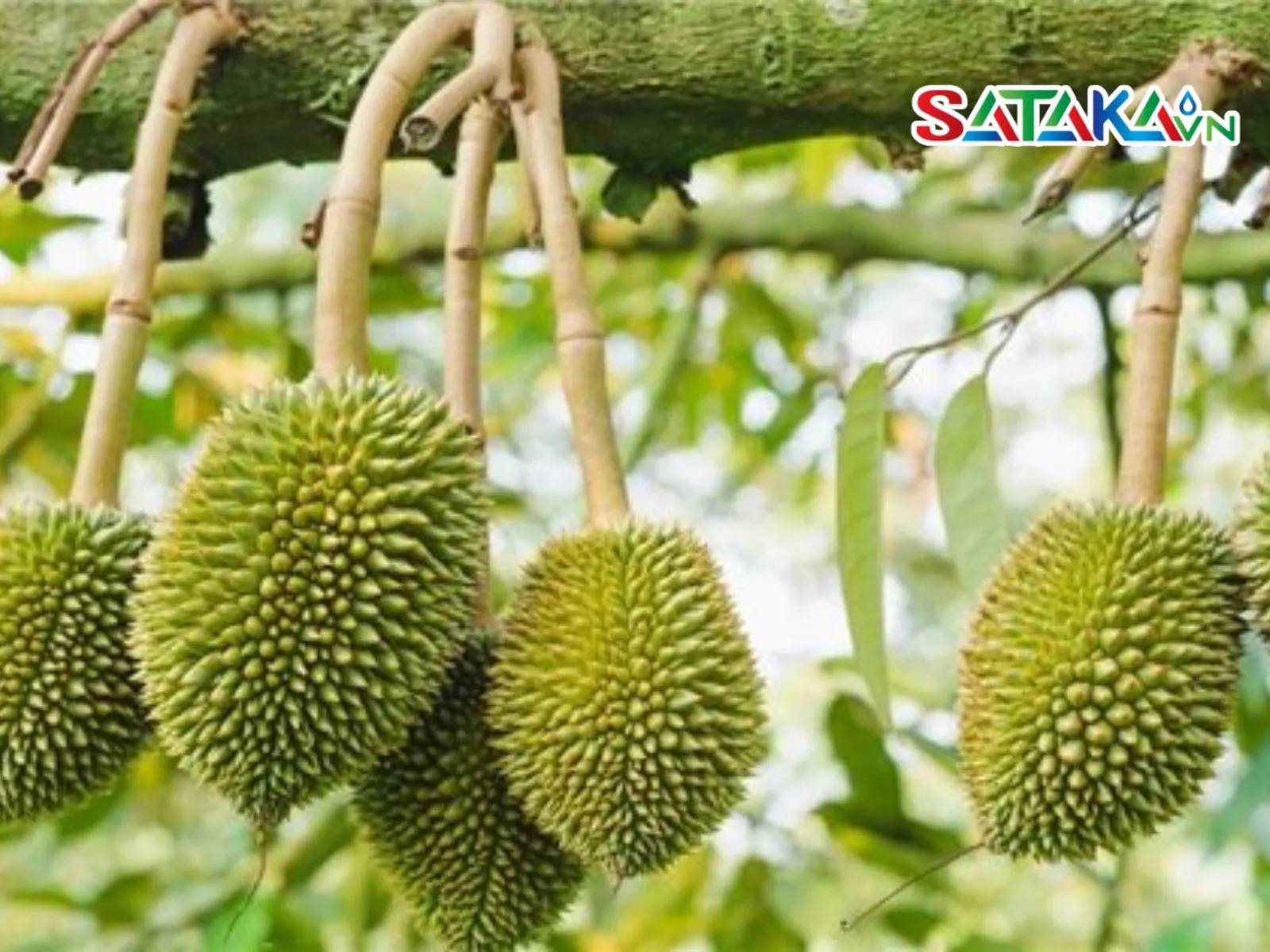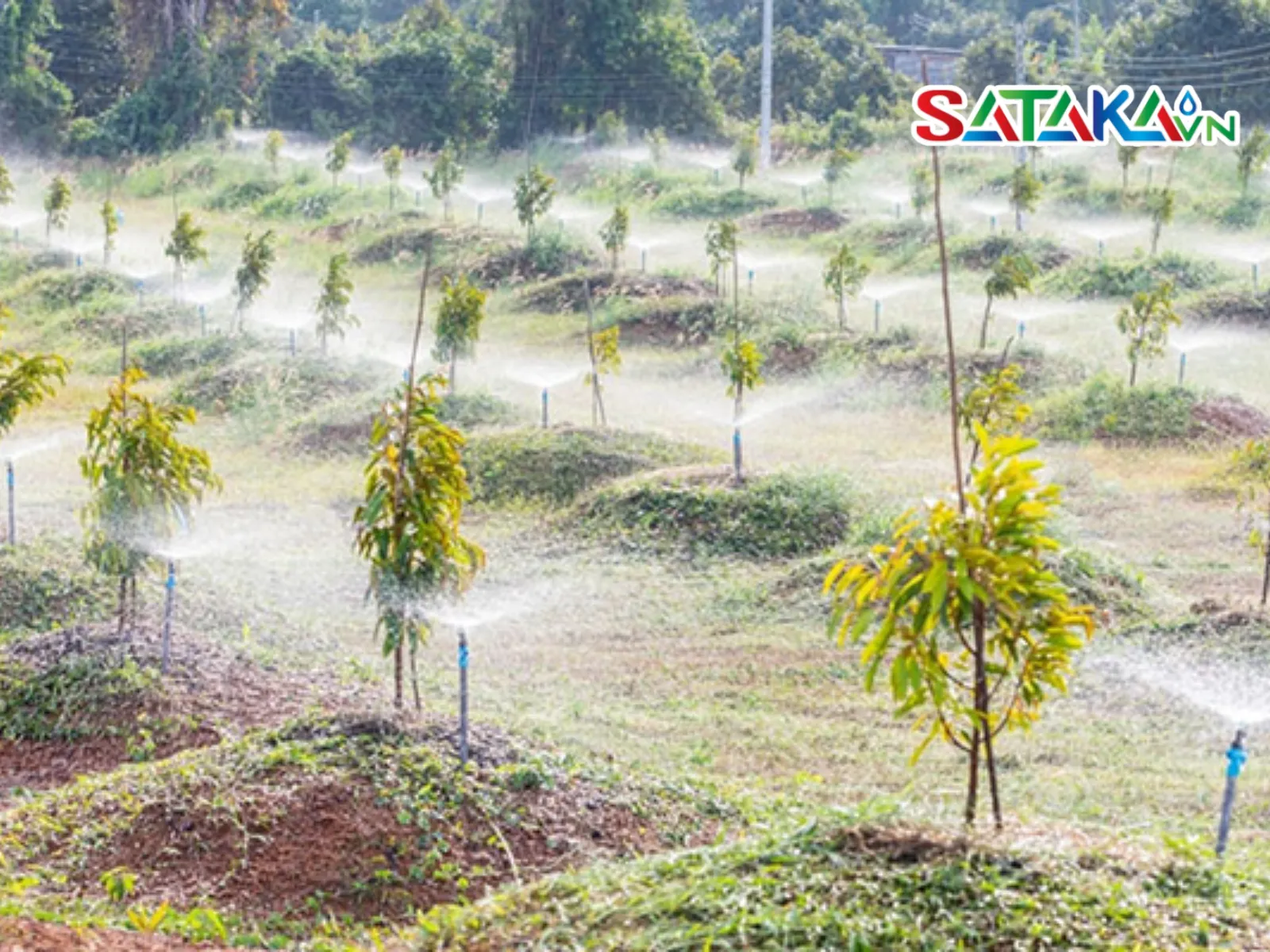Proper durian tree care techniques help the tree grow healthily, increase productivity and fruit quality. Learn the secrets of care from soil, water to nutrition.
The technique of caring for durian trees plays a decisive role in achieving the best yield and fruit quality. For durian trees to grow healthily and produce high yields, applying proper care techniques is essential. In this article, Sataka will explore the important factors in durian tree care, from seed selection to specific care methods, to ensure your durian trees develop most effectively.
Understanding the environmental conditions and requirements is crucial for healthy growth and high yields. Below are the environmental factors growers should pay special attention to:
Durian trees thrive in soil with a thick cultivation layer, rich in organic matter, and good drainage during the rainy season. Especially during the dry season, the soil must provide sufficient water to ensure continuous growth. They do not grow well in saline, acidic, clay-heavy, or low-fertility soils.

Durian tree care techniques
Durian trees require an appropriate amount of water to grow and develop. Ideal annual rainfall is between 1,600 and 3,000 mm, with 2,000 mm being optimal to ensure proper care techniques and strong growth.
Light is vital for photosynthesis in durian trees.
A temperature range of 24-30°C is ideal for growth. During the flowering phase, a lower temperature of 20-22°C and 50-60% humidity are needed. Average air humidity of 75-80% is suitable for overall development.
Proper care techniques are essential to achieve high yields and quality fruit. These techniques require careful attention throughout the tree's growth stages, fertilization, pruning, and surrounding environmental management.
Durian trees go through various stages, each requiring specific care techniques to ensure optimal growth and timely fruiting.
Fertilization is crucial for providing nutrients for healthy growth and consistent fruit production.
Note: Fertilizers should be applied in multiple sessions annually, especially during flowering and fruiting phases, to supply sufficient nutrients.
Planting windbreaks, shade trees, and intercropping are indispensable parts of durian tree care. These methods protect trees from environmental impacts, retain soil moisture, and create favorable growth conditions.

Durian tree care techniques bring high productivity
Pruning and shaping the canopy are essential to strengthen tree structure, optimize photosynthesis, and reduce pests and diseases.
Thinning flowers and fruits helps ensure high-quality durian fruits by directing nutrients to select healthy fruits instead of distributing them to numerous subpar ones.
Durian yield and quality depend on multiple factors, including tree variety, care techniques, weather conditions, and soil quality.
1. Tree variety: Choose healthy, high-yielding varieties suitable for local conditions.
2. Care techniques:

Climate affects the yield and quality of durian
3. Weather: Extreme climates such as drought, storms, or temperature fluctuations can affect flowering and fruiting.
4. Soil: Poor, acidic, or saline soil can harm growth. Soil improvement and proper fertilization are necessary for healthy trees.

Durian bears fruit after 3 to 5 years
Care techniques: Proper fertilization, watering, and pruning can accelerate growth and fruiting.
Environmental conditions: Warm climates, sufficient water, and nutrient-rich soil enhance development.
Weather factors: Ideal temperatures (24-30°C) and humidity (75-80%) encourage flowering and fruiting.
To ensure healthy growth and high yields, follow these important notes during care:
1. Select suitable varieties:
2. Regular observation:
3. Apply advanced techniques:

Notes when taking care of durian trees
Applying precise durian tree care techniques is the key to achieving the best results in durian cultivation. From selecting the right variety and proper care methods to leveraging scientific advancements, each step contributes significantly to tree development and fruit quality. Sataka hopes these techniques will be beneficial for farmers, encouraging effective durian care and rewarding patience with high-quality fruits.